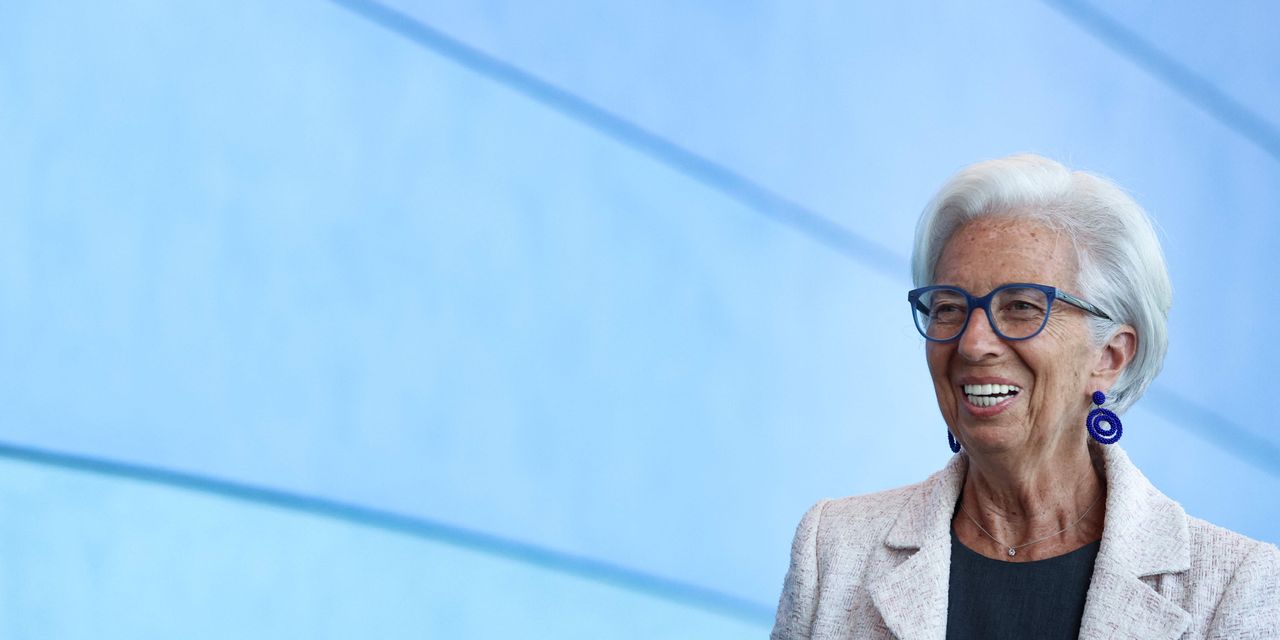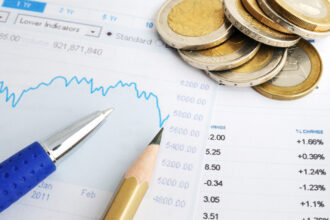The European Central Bank on Thursday lifted its key interest rates by 25 basis points to an all-time high, continuing a fight against persistent inflation as it acknowledged an economic slowdown.
“Inflation continues to decline but is still expected to remain too high for too long. The Governing Council is determined to ensure that inflation returns to its 2% medium-term target in a timely manner,” the ECB said in a statement.
At the same time, it signaled that its 10th straight rate hike may be its last, though European Central Bank President Christine Lagarde refused to take the possibility of a further rate increase off the table.
Market participants had been torn over prospects for a rate hike heading into the meeting. ECB policy makers were also divided, with Lagarde noting that some members of the Governing Council were in favor of a September pause, while a “solid majority” backed the decision to hike.
The euro
EURUSD,
was down 0.6% versus the U.S. dollar at $1.067 after touching its lowest versus the greenback since late May, a move exacerbated by a round of strong U.S. economic data. European bond yields also fell. The euro had been flat ahead of the decision.
See: ‘Dovish hike’ by ECB sees euro and German bond yields slide
Ahead of the meeting, expectations had moved more decisively in favor of a further monetary tightening after Reuters reported Wednesday that the ECB staff would raise their inflation forecast for this year and next while lowering the growth forecast.
The report proved correct, with ECB estimating euro area inflation at 5.6% in 2023, 3.2% in 2024 and 2.1% in 2025 — an upward revision for 2023 and 2024 and a downward revision for 2025. The upward revision for 2023 and 2024 mainly reflects a higher path for energy prices, the ECB said. The staff significantly downgraded its forecasts for eurozone growth, looking for the economy to expand 0.7% in 2023, 1% in 2024 and 1.5% in 2025.
The ECB lifted its deposit rate by 25 basis points, or a quarter of a percentage point, to 4%, a record high. The main refinancing rate was raised by the same amount to 4.5%; the rate on the marginal lending facility was also increased by a quarter point to 4.75%.
Analysts focused on language in the statement that was taken as a signal the ECB may is at or near the end of its rate-hike cycle.
“Based on its current assessment, the Governing Council considers that the key ECB interest rates have reached levels that, maintained for a sufficiently long duration, will make a substantial contribution to the timely return of inflation to the target,” the ECB statement said. “The Governing Council’s future decisions will ensure that the key ECB interest rates will be set at sufficiently restrictive levels for as long as necessary.”
The language was “stronger than might have been expected and represents what looks like a hard-fought internal compromise between hawks and doves: ‘we hike this time, but we say we are likely done,’” said Krishna Guha and Marco Casiraghi, economists at Evercore ISI, in a note.
The decision and Lagarde’s remarks “will go down as a dovish hike; after all we see clear indication in the ECB’s communication that today’s increase will be the last of the current tightening cycle,” said Claus Vistesen and Melanie Debono, economists at Pantheon Macroeconomics, in a note.
Lagarde, in a news conference, said it was understandable that market focus would turn more toward how long the ECB will hold rates at current levels, but emphasized that the central bank “can’t say that we are at peak.” Future moves will depend on incoming data.
The Pantheon economists said they “now see a high bar for anything other than a holding operation in the October and December meetings. Looking further ahead, we still see a narrow window for rate cuts next year, though there is no way that you can get the ECB to even contemplate that scenario at this point.”
The ECB’s internal debate wasn’t a surprise. Policy makers were forced to weigh lingering core inflationary pressure against evidence of rapidly worsening economic conditions in the euro area, wrote economists at ING ahead of the decision.
The HCOB eurozone composite PMI fell to a 33-month low of 46.7 in August, on a scale where readings below 50 indicate deteriorating conditions. Eurozone GDP was revised lower for the second quarter to show a scant 0.1% quarter-on-quarter growth.
—Steve Goldstein contributed.
Read the full article here








